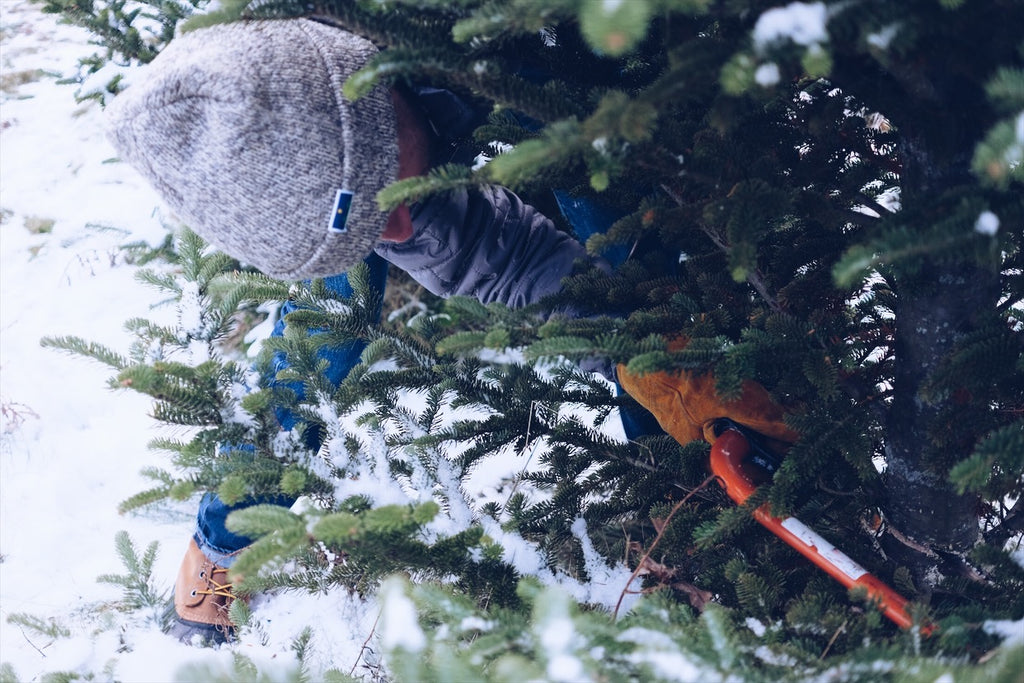If the farthest you travel for your Christmas tree each year is to your storage room, you're truly missing out. Because there are a lot of really great things that accompany one's pursuit of the perfect Christmas tree. We agree, the fake tree had its time. And it certainly will always have its place (college dorm, local watering hole, VFW, etc). But there will be no denying, a trip to the local tree farm brings with it a feast of traditions (and memories). After all, the holiday season is meant for social traditions. We're talking hot toddies, warm cookies, and of course a meal worthy of a king as you kick back and admire your accomplishment. The shop local movement, along with numerous other recent trends (like #exploremore, #optoutside, #domore, #adventuretime, etc.) have really ramped up all that goes along with procuring a Christmas tree for real. It's not a chore, it's an experience!
If you have a fake tree, it's time for a change. Donate that thing to a local church or shelter. Then summon your inner Clark Griswold and pack up the family truckster. Although there are reasons a fake tree might be the best option, there are many more reasons you should forego convenience and get a little mud on them boots. If not for the fact it's a great family and friends engagement, but because it's good for the local community. And also, it's good for the environment.
Americans spend a LOT of money on Christmas trees each year. That's money that goes back to your local community (so long as you're shopping local). PLEASE, shop local! And if you think you're saving the trees because you're assembling a plastic version of one each year, let's think about it more. A Christmas tree exists for one reason-- to be a Christmas tree. It's why they're planted, and it's why they are harvested. And then you have the benefits that go hand-in-hand with having a local tree farm. That very Christmas tree farm provides habitat for a number of animals, birds and insects-- and for long durations as each tree must grow for a number of years before finally being ready to serve you. Many times, a tree farm is sitting on soil not otherwise able to sustain other types of crops. That's a win-win. In fact, the trees are good for the soil. In addition, they aid in the protection of nearby waterways. And let's not forget, they generate oxygen.
So how do you pick the perfect tree? Start off by measuring the space in your home that the tree will occupy. This is important. Then, decide your desired approach. Do you want to venture out and cut the tree down yourself? Or choose from an inventory of trees already harvested? Either way, you're looking for a tree that is alive and healthy. The needles should be green and remain attached to the tree when bumped or rubbed. Gently rub a few branches between your hands and make sure the needles stay intact. The branches should also have bounce while not breaking when compressed. Give the tree a hug, you'll know right away what we're talking about.
If you are purchasing a pre-cut tree, always ask to have a fresh cut taken off the bottom of the tree. A half inch is all it takes. This will open it up for proper water absorption, and that means your tree will last longer. Having a fresh cut will also level off the base, making it easily to place in the tree stand.
What kind of a tree should you look for? It does make a difference, but it doesn't need to be over-thought. Unless of course you're hosting the Walton's family Christmas, or decorating Stein Eriksen Lodge in Deer Valley. The Balsam Fir is the most abundant, and also the most reasonably priced. But it's Christmas, why not splurge a little? For another 10-15 bucks, we recommend an evergreen with short needles-- like a Fraser Fir or Noble Fir. Remember, getting the tree home is only half the battle. You'll still need to decorate it. And both the Fraser and Noble Fir allow for ample room to hang your ornaments. They also tend to have stronger branches, thus allowing you to hang those heavier ornaments.
-----
Here are some other things to consider when choosing a tree:
Color. They do very in color. From dark greens, to more electric greens. Sometimes a hint of blue.
Scent. Some trees are heavy in scent. Some have very little. This is personal preference. Sensitive scents? There are options for you.
Needle Retention. This is mostly driven by how often you want to be sweeping up needles. Note: keeping your tree watered will help prevent needles from falling from the tree. And if it loses a lot of needles, swoop them up and create your own potpourri-type bowl and extend that fresh pine scent to other areas of your house.
-----
Common types of Christmas trees and what to expect:
Balsam Fir. Dark green in color, nice spicy scent.
Douglas Fir. Bluish to dark green in color, rich scent.
Fraser Fir. Yellowish green in color, fragrant scent
Blue Spruce. Silver blue in color, strong scent.
Norway Spruce. Green in color, medium scent.
Scotch Pine. Dark green in color, slight fragrance, strong needle retention.
White Spruce. Bluish-green in color, medium scent.
Have fun with it. Create your own traditions. Guaranteed, this will become something you'll look forward to for years to come.

